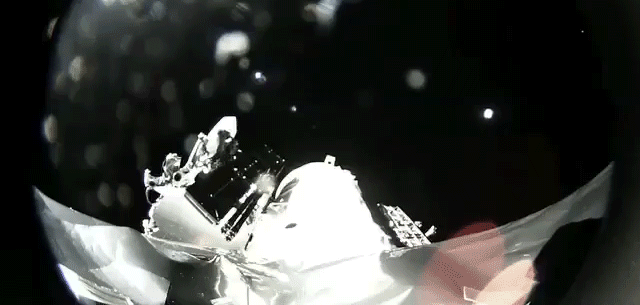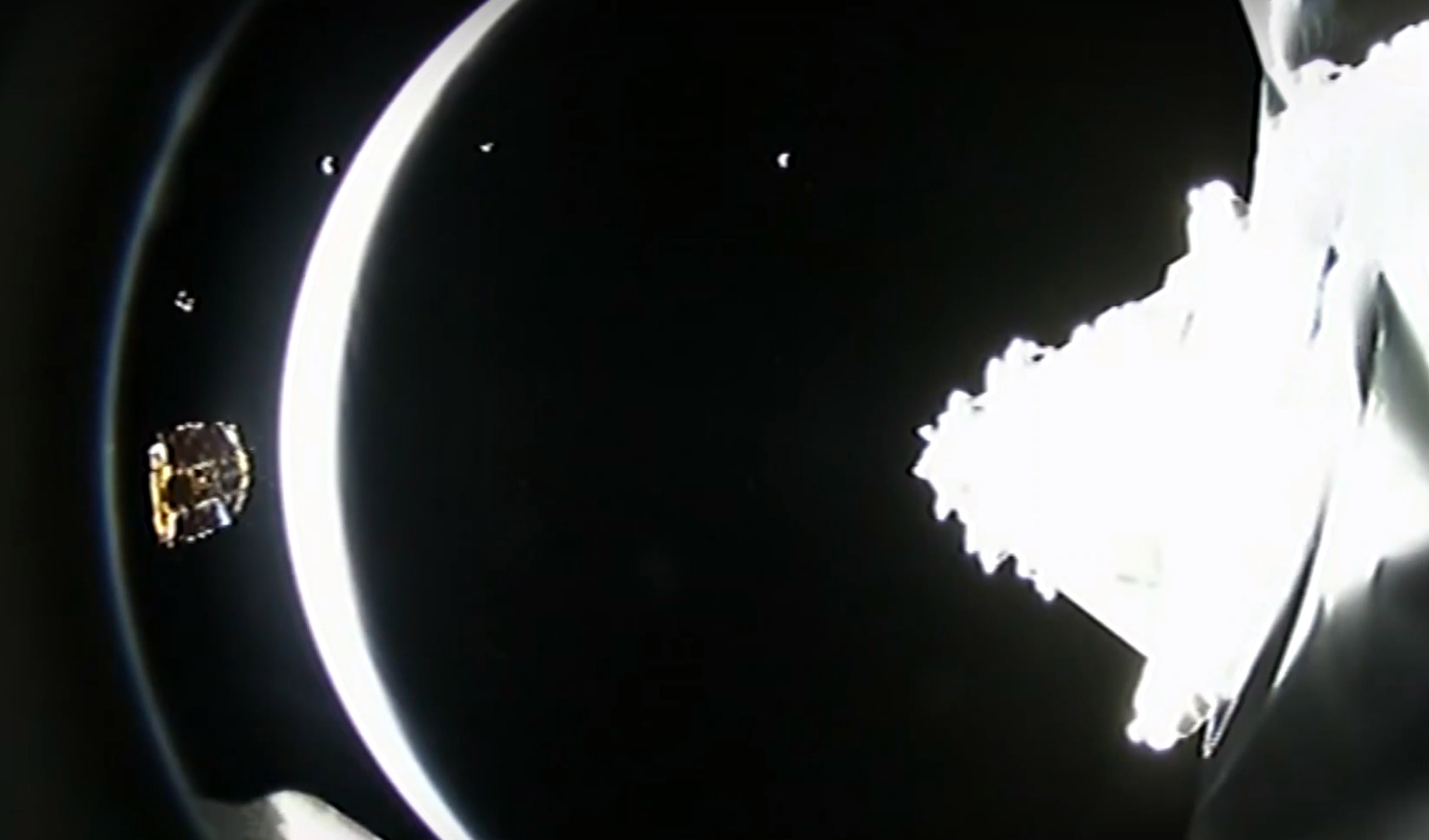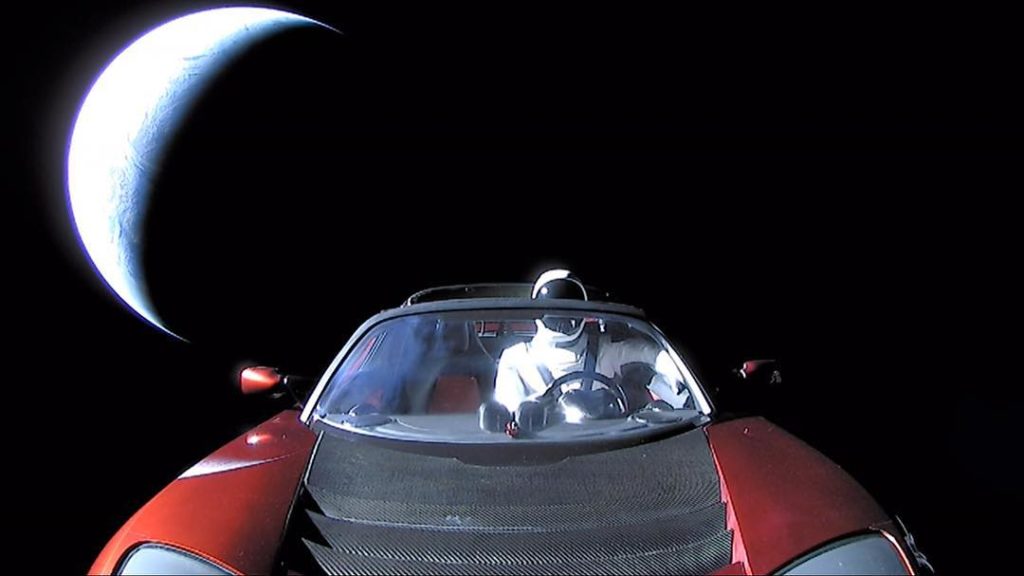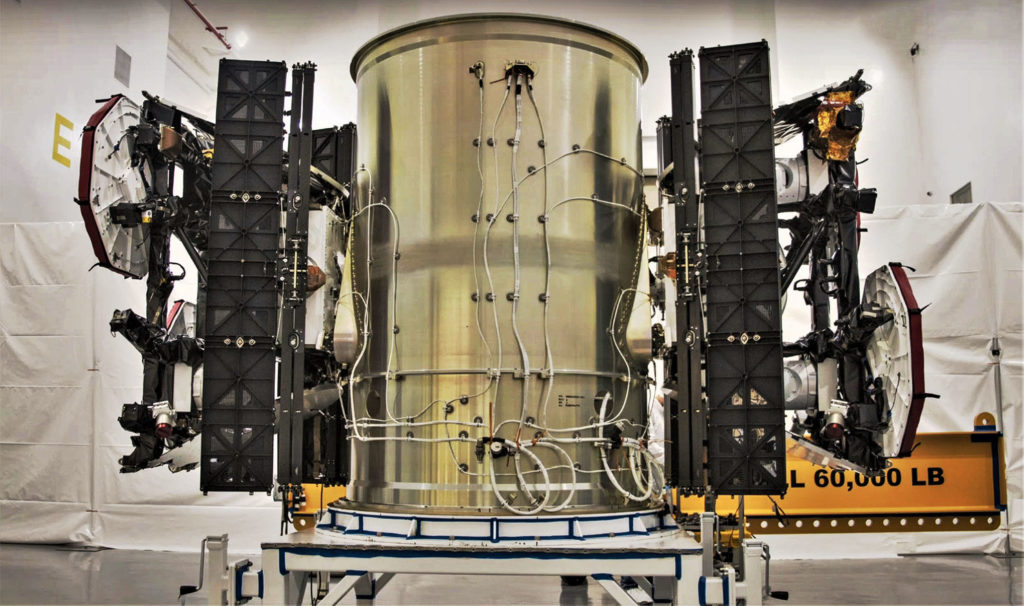

SpaceX
SpaceX job posts hint at building satellite constellations for US military
Published within the last week, unusual SpaceX job postings have begun to combine a range of topics unusual for the company, indicating some level of internal interest in entering into an entirely new industry and mode of operations.
Judging from the job descriptions, SpaceX is looking to hire engineers familiar with integrating third-party payloads onto in-house satellite buses, and they are primarily interested in engineers with Top Secret security clearances.
https://twitter.com/collinkrum/status/1002425606401736704
Given the subtlety of the relevant job postings and the apparent need for high-level security clearances to become involved, it’s extremely difficult to figure out what exactly SpaceX’s goals are. Still, they contain just enough detail to point in the direction of several obvious explanations. These revolve around one industry in particular: satellite operations and sales to or for third parties.
To some extent, these job listings are to be expected: SpaceX has extensive experience building spacecraft (Falcon 9 upper stages and Dragon) explicitly intended for internal use and operations only. Instead, what is surprising about these job listings is the presence of repeated references to “customer payload[s]” in the context of “satellite mission design”, “SpaceX-developed satellite constellations and payload missions”, the “simulation of remote sensing payloads and constellations”, and a need for “on-orbit commissioning” or “activation”.
Put simply, there is no obvious explanation for why SpaceX would need any of those things, at least in the context of the company’s publicly-known activities and business interests. Taken individually, they might be explained by – as described in the same listings – “[SpaceX’s expanding] classified mission manifest”, as it’s well-known that SpaceX is in the process of certifying Falcon 9 and Falcon Heavy to launch all practicable Air Force (USAF) and National Reconnaissance Office (NRO) payloads. Those payloads often need to be placed in high-energy orbits that rely on extended upper stage coasts between orbit-raising maneuvers, essentially requiring modifications to Falcon 9’s upper stage such that it becomes a sort of ad-hoc, short-lived satellite.
- SpaceX’s first Falcon Heavy launch also happened to be a strategic and successful test of Falcon upper stage coast capabilities. (SpaceX)
- SpaceX’s first two Starlink prototype satellites are pictured here before their inaugural launch, showing off a thoroughly utilitarian bus and several advanced components. (SpaceX)
Starlink spinoffs
However, in all (conceivable) cases where SpaceX might launch a highly-classified payload for a government customer, the dynamic is still precisely that – launch provider (SpaceX) and customer (NRO/USAF/etc). Just like FedEx or UPS have no ownership of or relationship with the goods they transport, satellite launch providers are simply delivering a (very expensive, fragile, and irreplaceable) payload from Point A (the ground) to Point B (orbit). When UPS ships a new smartphone from the manufacturer to the customer, they most certainly do not perform an “in-house commissioning” – if the customer needs help setting up their new phone, they go to the manufacturer or service provider (cell carrier).
In the same way, satellite commissioning is a generally necessary process where the satellite manufacturer – rarely the actual operator or service provider – raises or fine-tunes the expensive spacecraft’s orbit and verifies that all systems and payloads are functioning as intended – only after that process is complete does the manufacturer finally ‘hand off’ the satellite to the customer that paid for it. In some cases, the manufacturer continues to maintain or at least monitor the satellite in the background as the owner serves its own customers, much like how military airplane manufacturers are typically contracted to maintain or support those planes even after final delivery.
Judging from the need for top-secret security clearance in nearly all of these new job postings, SpaceX clearly has a very particular sort of customer in mind. Be it DARPA, NRO, the USAF, or some totally unknown government actor, one or several of the above entities have expressed explicit interest in coopting SpaceX’s newfound status as a prospective dirt-cheap-satellite manufacturer. If that were not the case, SpaceX would not be keen to publish 5+ engineering job postings with top-secret clearance as an explicit prerequisite.

Project Blackjack
Ultimately, it’s undeniable that the prospect of a completed vertically-integrated launch and satellite service provider could be so alluring that entities like the NRO, USAF, or DARPA simply could not pass up the opportunity to at least give it a try. From a purely speculative perspective, the services and processes SpaceX seems to be in the middle of developing are an almost perfect fit with DARPA’s (Defense Advanced Research Projects Agency) brand new Blackjack program. Perfectly summarized in September by Space News reporter Sandra Erwin,
“[DARPA] wants to buy small satellites from commercial vendors, equip them with military sensor payloads and deploy a small constellation in low-Earth orbit to see how they perform in real military operations.”
DARPA awarded a $1.5M contract to smallsat manufacturer and operator Blue Canyon on in October 2018, small relative to the program’s roughly $118M budget. DARPA has made clear that it plans to finalize multiple contracts with different prospective satellite designers and operators in order to ensure a competitive environment, fuel growth in a fairly new industry, and pave the way for the final procurement of an experimental constellation of 20 satellites by 2021. If successful, it could completely change the way the entire US government procures national security-related satellites, offering a far faster, cheaper, and more flexible route to set up unique capabilities.
For prompt updates, on-the-ground perspectives, and unique glimpses of SpaceX’s rocket recovery fleet check out our brand new LaunchPad and LandingZone newsletters!

News
Tesla hints at Starlink integration with recent patent
“By employing polymer blends, some examples enable RF transmission from all the modules to satellites and other communication devices both inside and outside the vehicle.”

Tesla hinted at a potential Starlink internet terminal integration within its vehicles in a recent patent, which describes a vehicle roof assembly with integrated radio frequency (RF) transparency.
The patent, which is Pub. No U.S. 2025/0368267 describes a new vehicle roof that is made of RF-transparent polymer materials, allowing and “facilitating clear communication with external devices and satellites.”
Tesla believes that a new vehicle roof design, comprised of different materials than the standard metallic or glass elements used in cars today, would allow the company to integrate modern vehicular technologies, “particularly those requiring radio frequency transmission and reception.
Tesla has recently filed a US patent application on integrating RF transparent materials into the roof structure.
“facilitating clear communication with external devices and satellites”
Tesla fleet is getting @Starlink connectivity integration soon. LFG @Tesla @elonmusk… pic.twitter.com/bLa8YtPLd1
— Chansoo Byeon (@Chansoo) December 9, 2025
Instead of glass or metallic materials, Tesla says vehicles may benefit from high-strength polymer blends, such as Polycarbonate, Acrylonitrile Butadiene Styrene, or Acrylonitrile Styrene Acrylate.
These materials still provide ideal strength metrics for crashworthiness, stiffness for noise, vibration, and harshness control, and are compliant with head impact regulations.
They would also enable better performance with modern technologies, like internet terminals, which need an uninterrupted signal to satellites for maximum reception. Tesla writes in the patent:
“By employing polymer blends, some examples enable RF transmission from all the modules to satellites and other communication devices both inside and outside the vehicle.”

One of the challenges Tesla seems to be aware of with this type of roof design is the fact that it will still have to enable safety and keep that at the forefront of the design. As you can see in the illustration above, Tesla plans to use four layers to increase safety and rigidity, while also combating noise and vibration.
It notes in the patent that disclosed examples still meet the safety requirements outlined in the Federal Motor Vehicle Safety Standards (FMVSS).
Starlink integrated directly into Tesla vehicles would be a considerable advantage for owners. It would come with a handful of distinct advantages.
Initially, the inclusion of Starlink would completely eliminate cellular dead zones, something that is an issue, especially in rural areas. Starlink would provide connectivity in these remote regions and would ensure uninterrupted service during road trips and off-grid adventures.
It could also be a critical addition for Robotaxi, as it is crucial to have solid and reliable connectivity for remote monitoring and fleet management.
Starlink’s growing constellation, thanks to SpaceX’s routine and frequent launch schedule, will provide secure, stable, and reliable internet connectivity for Tesla vehicles.
Although many owners have already mounted Starlink Mini dishes under their glass roofs for a similar experience, it may be integrated directly into Teslas in the coming years, either as an upgrade or a standard feature.
Investor's Corner
SpaceX IPO is coming, CEO Elon Musk confirms
However, it appears Musk is ready for SpaceX to go public, as Ars Technica Senior Space Editor Eric Berger wrote an op-ed that indicated he thought SpaceX would go public soon. Musk replied, basically confirming it.

Elon Musk confirmed through a post on X that a SpaceX initial public offering (IPO) is on the way after hinting at it several times earlier this year.
It also comes one day after Bloomberg reported that SpaceX was aiming for a valuation of $1.5 trillion, adding that it wanted to raise $30 billion.
Musk has been transparent for most of the year that he wanted to try to figure out a way to get Tesla shareholders to invest in SpaceX, giving them access to the stock.
He has also recognized the issues of having a public stock, like litigation exposure, quarterly reporting pressures, and other inconveniences.
However, it appears Musk is ready for SpaceX to go public, as Ars Technica Senior Space Editor Eric Berger wrote an op-ed that indicated he thought SpaceX would go public soon.
Musk replied, basically confirming it:
As usual, Eric is accurate
— Elon Musk (@elonmusk) December 10, 2025
Berger believes the IPO would help support the need for $30 billion or more in capital needed to fund AI integration projects, such as space-based data centers and lunar satellite factories. Musk confirmed recently that SpaceX “will be doing” data centers in orbit.
AI appears to be a “key part” of SpaceX getting to Musk, Berger also wrote. When writing about whether or not Optimus is a viable project and product for the company, he says that none of that matters. Musk thinks it is, and that’s all that matters.
It seems like Musk has certainly mulled something this big for a very long time, and the idea of taking SpaceX public is not just likely; it is necessary for the company to get to Mars.
The details of when SpaceX will finally hit that public status are not known. Many of the reports that came out over the past few days indicate it would happen in 2026, so sooner rather than later.
But there are a lot of things on Musk’s plate early next year, especially with Cybercab production, the potential launch of Unsupervised Full Self-Driving, and the Roadster unveiling, all planned for Q1.
News
SpaceX reportedly mulling IPO, eyeing largest of all time: report
“I do want to try to figure out some way for Tesla shareholders to participate in SpaceX. I’ve been giving a lot of thought to how to give people access to SpaceX stock,” Musk said.

SpaceX is reportedly mulling an initial public offering, eyeing what would be the largest valuation at the time of availability of all time, a new report from Bloomberg said on Tuesday.
It is one of many reports involving one of Elon Musk’s companies and a massive market move, as this is not the first time we have seen reports of an IPO by SpaceX. Musk himself has also dispelled other reports in the past of a similar nature, including an xAI funding round.
SpaceX and Musk have yet to comment on the report. In the past, untrue reports were promptly replied to by the CEO; this has not yet gained any response, which is a good sign in terms of credibility.
However, he said just a few days ago that stories of this nature are inaccurate:
“There has been a lot of press claiming SpaceX is raising money at $800B, which is not accurate. SpaceX has been cash flow positive for many years and does periodic stock buybacks twice a year to provide liquidity for employees and investors. Valuation increments are a function of progress with Starship and Starlink and securing global direct-to-cell spectrum that greatly increases our addressable market. And one other thing that is arguably most significant by far.”
There has been a lot of press claiming @SpaceX is raising money at $800B, which is not accurate.
SpaceX has been cash flow positive for many years and does periodic stock buybacks twice a year to provide liquidity for employees and investors.
Valuation increments are a…
— Elon Musk (@elonmusk) December 6, 2025
Musk has discussed a potential IPO for SpaceX in recent months, as the November 6 shareholder meeting, as he commented on the “downsides” of having a public company, like litigation exposure, quarterly reporting pressures, and other inconveniences.
Nevertheless, Musk has also said he wants there to be a way for Tesla shareholders to get in on the action. At the meeting in early November, he said:
“I do want to try to figure out some way for Tesla shareholders to participate in SpaceX. I’ve been giving a lot of thought to how to give people access to SpaceX stock.”
Additionally, he added:
“Maybe at some point., SpaceX should become a public company despite all the downsides of being public.”
Musk has been historically reluctant to take SpaceX public, at times stating it could become a barrier to colonizing Mars. That does not mean it will not happen.
Bloomberg’s report cites multiple unidentified sources who are familiar with the matter. They indicate to the publication that SpaceX wants to go public in mid-to-late 2026, and it wants to raise $30 billion at a valuation of around $1.5 trillion.
This is not the first time SpaceX has discussed an IPO; we reported on it nine years ago. We hope it is true, as the community has spoken for a long time about having access to SpaceX stock. Legendary investor Ron Baron is one of the lucky few to be a SpaceX investor, and said it, along with Tesla, is a “lifetime investment.”
Tesla bull Ron Baron reveals $100M SpaceX investment, sees 3-5x return on TSLA
The primary driver of SpaceX’s value is Starlink, the company’s satellite internet service. Starlink contributes 60-70 percent of SpaceX’s revenue, meaning it is the primary value engine. Launch services, like Falcon 9 contracts, and the development of Starship, also play supporting roles.










